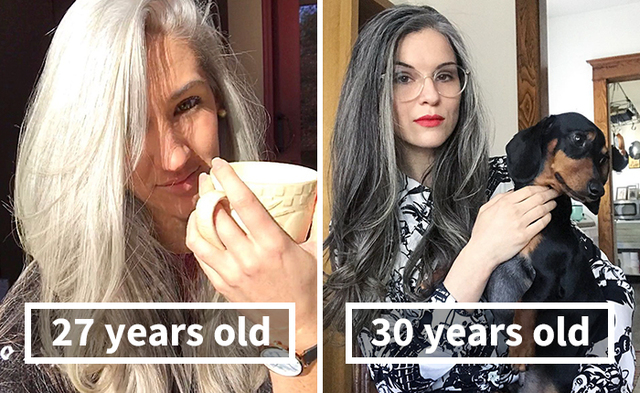9 Character Types to Include in Your Story
Recently, someone on Twitter asked me how he could make his characters more three-dimensional.
For me, it’s one of those things that evolves organically over time. Something as small as the outfit that someone wears or the way they phrase a sentence can trigger my mind to create a character.
The more characters you create, the easier it becomes.
But there are some types of characters that every story must have.
Once you’re aware of character type, you’ll find yourself noticing it more and more in what you read and watch. You can then use this awareness to study that character and see what elements you can use in your own writing.
Knowing what role your characters play in your story helps you to refine your plot, choose your narrative style, and tighten your prose.
So, let’s dig a little deeper, shall we?
Protagonist (main character)
This is the person your story revolves around.
Most of the time they’ll also be your narrator, but not always.
For example, in The Great Gatsby, Gatsby is the protagonist, but Nick is the narrator.
The majority of books only have one protagonist. It is possible to have more than one, but you need to be incredibly organised if this is the way you want to go. I would advise avoiding this at all costs for your first writing project. It doesn’t matter how much you love your story or characters, you will get confused. (I speak from experience.)
Work on your writing skills first, then work on a story with a complicated plot.
Deuteragonist
A deuteragonist is the second-in-command to your protagonist. You might call them a sidekick. I don’t like that word, because it makes them seem less important. This person is very important.
It took me a while to admit that Fayth is the deuteragonist in What Happens in New York, while Hollie is the protagonist. Deuteragonists can still have a significant role in your story, even if the story doesn’t fully revolve around them.
Serena is the deuteragonist to Gossip Girls’ Blair; Han Solo is the deuteragonist to Star Wars’ Luke.
They’re not the same as a secondary character.
Antagonist (villain)
An antagonist is the person or thing that causes your protagonist all the drama. It doesn’t have to be a person, though. Antagonists can be internal, too. Men@tal health issues such as anx@iety, depre@ssion, or str@ess can cause just as many problems for your protagonist as another person or creature with an axe to grind.
Love interest
This one is pretty self-explanatory. It’s the person your protagonist is destined to fall in love with. Even if only temporarily.
You may wish to toy with your readers by having your protagonist and love interest not get together, but be careful because if you drag this out for too long it can get frustrating and cause you to lose people.
Usually they’re a secondary character, but sometimes they can also be a deuteragonist and even a narrator, too.
Mentor
The mentor is the person that guides your protagonist through their journey (whatever that may be).
Dumbledore and Obi-Wan Kenobi are two of the most famous mentor examples out there.
And, like Dumbledore and Obi-Wan, most mentors die at some point during the story. Usually when the protagonist thinks that they need him or her the most.
Narrator
A narrator is the person who tells your story.
If you’re writing in first person, this will likely be your protagonist. Your deuteragonist may also be a narrator.
If you’re writing in third person, you are your narrator.
But, unless it’s part of your writing style (like Dickens in A Christmas Carol), you don’t want your reader to be aware of this. You still want them to forget all about you and focus on the actions of your characters.
Secondary character
A secondary character is the one who joins your hero for their journey.
Sometimes there’s more than one, but if you have more than two, you’re going to start overcomplicating things.
(See previous point about having too many protagonists.)
Ron and Hermione from Harry Potter are good examples of secondary characters. They’re three-dimensional, but it’s clear that the story doesn’t revolve around them. They’ll do anything they can to help the Harry, though.
Subplots often revolve around secondary characters, such as Hermione’s creation of S.P.E.W..
Tertiary character
We know less about tertiary characters than protagonists or secondary characters, but that doesn’t mean that we don’t still care about them or want to know more.
Many of the teachers at Hogwarts, such as Lupin, fall into this category.
They’re not central to the story, and they’re not along for the ride. They may, however, play a crucial role in a part of the protagonist’s journey, such as Lupin teaching Harry about dementors.
Flat character
A flat character is someone we don’t need to know anything about. They’re in one scene, maybe two.
They don’t really help to move the story along, but they do help your protagonist with something or other.
Everything from bartenders to pets can be flat characters.
Even though they’re called flat characters, that doesn’t mean that they have to be lacking in personality. You can still make them interesting by giving them their own way of speaking or a memorable mannerism.
Conclusion
Not every story will include every type of character.
Most stories outside of fantasy and sci-fi don’t have mentors, for example.
Stories with just one protagonist and point of view don’t need a deutarogonist.
But the more you’re aware of the different character types, the more you can make a better informed decision about which character types you need to include in your story.
Over to You
What’s your favourite type of character to write and why?




